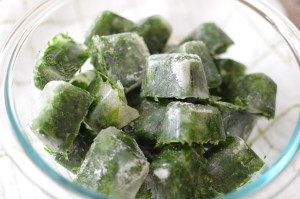 Freezing foods for freshness
Freezing foods for freshness
The Ice-Man Cometh …
Histamine is odorless, flavorless and invisible to the naked eye – thus, it is undetectable without scientific instruments. It starts to accumulate in plant and animal foods as soon as the plant or animal dies, and continues to build up over time. This is why it is chiefly found in aged, cured, fermented, cultured, and spoiled foods. Histamine itself is not destroyed by cooking, freezing, hot smoking or canning.
So how can people with histamine intolerance cope?
- Choose to eat foods that are low in histamine and histamine-triggering compounds. (See the book “Is Food Making You Sick?“)
- Eat only foods that are very fresh.
- Make the most of your freezer!
Freezing foods is just about the only thing that halts the development of histamine. If you don’t have your own vegetable patch or herb garden, or if you cannot get to the supermarket every couple of days to buy fresh produce, take advantage of the modern convenience of a freezer. Do not allow food to languish for days in the refrigerator. If you’re not going to eat it straight away – freeze it. Defrost it when you are ready to eat it.
Of course foods like lettuces do not freeze well, but it is possible to freeze herbs and retain their flavor, if not their texture. Wash them and chop them first.
Here are some helpful suggestions for freezing herbs:
- Simply place them in a freezer-bag or zipper-lock bag and store them in the freezer for up to two weeks.
- Place chopped herbs into the compartments of an ice-cube tray, cover them with water and freeze them. You can leave them in the tray or put the frozen herb-blocks into a freezer-bag or zipper-lock bag and store them in the freezer for up to two weeks.
- Put chopped herbs into the compartments of an ice-cube tray, cover them with vegetable oil and freeze them. Freezing in oil best preserves the flavor.


